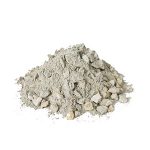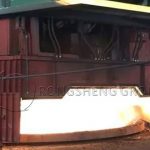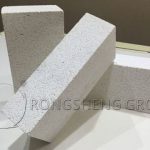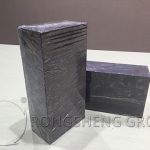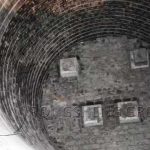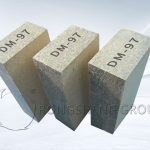Low carbon magnesia carbon bricks generally refer to a type of low-carbon composite material with a total carbon content of no more than 8%, using magnesia and graphite as the main raw materials, adding a certain amount of metal additives, and combining with organic binders. Traditional magnesia-carbon bricks with a carbon content of 10%-20% have good thermal shock resistance and excellent slag resistance, generally greater than 20W/(m·K). The non-wetting properties of graphite and slag and the reduction of iron oxide in the slag make the viscosity of the slag increase.
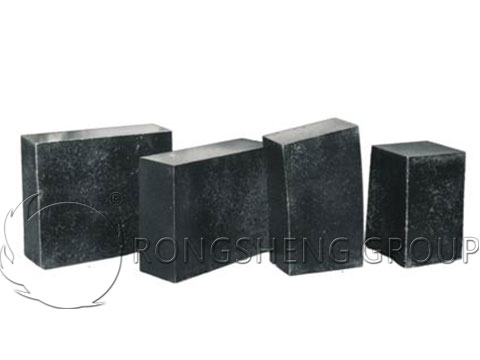
Problems in the Long-term Use of Traditional Magnesia Carbon Bricks
In the traditional production process of refractory bricks, the carbon content of magnesia-carbon bricks is generally 14%-20%, and the source of carbon is basically graphite. This is because graphite is resistant to high temperatures, has a low mass loss, small volume expansion, and contraction, and poor wettability to slag. Due to the high graphite content in traditional magnesia carbon bricks, it directly leads to increased heat loss. At the same time, traditional magnesia-carbon refractories will gradually expose the following problems during long-term use:
- (1) Carbon is easily oxidized during high-temperature smelting. After oxidation, a porous structure is easily formed in the refractory material, which reduces the strength of the material and causes the material to be easily corroded and penetrated by slag.
- (2) High thermal conductivity increases the temperature of molten steel and takes away more heat energy. Increase energy consumption and cause the corrosion of refractory materials to worsen.
- (3) High thermal conductivity causes deformation or damage to the furnace shell and metallurgical vessel.
- (4) Consuming a lot of precious graphite resources, increasing CO2, and CO emissions.
- (5) When used as the lining material for VOD refining furnaces and other special converters, it will increase the carbon content of molten steel and fail to meet the smelting standards of low carbon clean steel. High graphite content is not good for smelting low carbon steel and ultra-pure steel.
Therefore, reducing the amount of carbon used and preparing low-carbon magnesia-carbon refractories has become an inevitable trend in research. The carbon content of low-carbon magnesia-carbon bricks currently studied is generally not higher than 8%. Because as the carbon content decreases, the thermal conductivity of the magnesia carbon brick will decrease, the elastic modulus will increase, and the thermal shock stability will decrease. Compared with high-carbon magnesia carbon bricks, when the carbon content is reduced, the slag will penetrate into the pores of the bricks, resulting in poor slag and corrosion resistance of the magnesia carbon bricks. How to reduce the amount of graphite used while maintaining the superior performance of magnesia-carbon bricks, so that it can occupy an invincible position in the steelmaking industry, has become a hot issue that scholars at home and abroad are rushing to study. In other words, how to develop low-carbon magnesia carbon bricks that not only have excellent thermal shock resistance and slag resistance but also have low thermal conductivity, which is conducive to the development of ultra-pure steel and secondary refining technology? Has become the current development trend of magnesia carbon bricks.
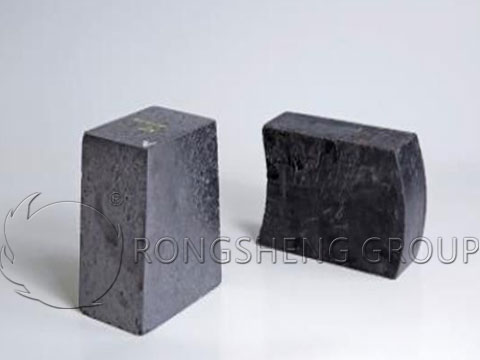
Performance Advantages of Low Carbon Magnesia Carbon Bricks
Obviously, as the carbon content in the magnesia-carbon bricks decreases, especially when the carbon content is less than 10%, the spalling resistance of the magnesia-carbon bricks decreases significantly. This is due to the inevitable result that carbon cannot form a continuous phase or the degree of continuity decreases. In order to improve the spalling resistance of low-carbon magnesia-carbon bricks, superfine graphite can be used instead of flake graphite. When the total carbon content exceeds 6%, the exfoliation resistance of magnesia-carbon bricks can show the superiority of ultra-fine graphite. The addition of ultra-fine graphite can inhibit the over-burning of the brick and reduce the elastic modulus of the brick. Improve the spalling resistance of low-carbon MgO-C bricks. In addition, the surface treatment of the magnesia can make the bricks form more continuously distributed tiny pores during the heat treatment process, thereby reducing the thermal conductivity of the magnesia carbon bricks and improving the thermal shock resistance. Because the carbonized structure of the traditional phenolic resin is a glassy structure, the material has poor resistance to peeling, and the use of phenolic-free organic binders can improve this problem.
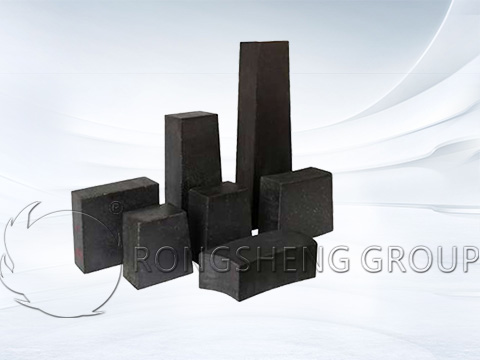
Performance Comparison of Two Kinds of MgO-C Bricks
| Items | Low Carbon MgO-C Brick | Ordinary MgO-C Brick | |
| Chemical Composition / % | MgO | 86 | 78 |
| Fixed Carbon | 7 | 15 | |
| After Drying | Apparent Porosity / % | 4.5 | 2.5 |
| Bulk Density / g/cm3 | 3.31 | 3.30 | |
| Cold Crushing Strength / MPa | 30 | 40 | |
| Flexural Strength / MPa | 10 | 17 | |
| After being Heated at 1000℃ in Coke | Apparent Porosity / % | 8.5 | 9.0 |
| Cold Crushing Strength / MPa | 25 | 35 | |
| Flexural Strength / MPa | 6 | 8 | |
| Abrasion Resistance | good | good | |
| Corrosion Resistance | better | good | |
| Oxidation Resistance | better | good | |
The Production Process of Low Carbon Magnesia Carbon Brick
Low-carbon magnesia-carbon bricks are refractory materials with excellent performance obtained by reducing the carbon content in magnesia-carbon bricks without changing the traditional preparation process. As the amount of graphite in low-carbon magnesia-carbon bricks is halved, the advantages of graphite, such as high thermal conductivity, extremely small thermal expansion coefficient, and elastic modulus, cannot be brought into play, resulting in the thermal stability and slag resistance of low-carbon magnesia-carbon bricks. Corrosion becomes worse. Therefore, how to not reduce the thermal stability and slag and corrosion resistance of low-carbon magnesia-carbon bricks has become the key to research. We can control the matrix structure of magnesia-carbon bricks by looking for carbon raw materials with better performance, so as to improve the thermal stability and slag and corrosion resistance of low-carbon magnesia-carbon bricks. A good matrix structure requires appropriate carbon particles to control the composition, shape, size, and distribution of the pores in the sample. At the same time, a good matrix structure can greatly affect the thermal conductivity, thermal expansion coefficient, and elastic modulus of the material, thereby improving the material’s oxidation resistance, thermal stability, and slag and corrosion resistance.
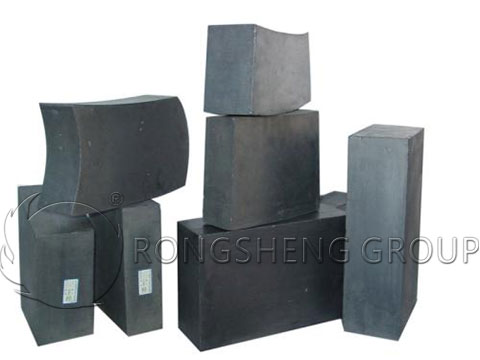
Rongsheng magnesia carbon brick refractory manufacturer
Rongsheng is an experienced manufacturer of refractory materials. Get the refractories price. Rongsheng’s magnesia carbon bricks include low carbon magnesia carbon bricks, aluminum magnesia carbon bricks, ladle magnesia carbon bricks, electric furnace magnesia carbon bricks, etc. Rongsheng has customers in more than 60 countries all over the world, for example, Russia, South Africa, Kazakhstan, Philippines, Chile, Malaysia, Uzbekistan, Indonesia, Vietnam, Kuwait, Turkey, Zambia, Peru, Mexico, Qatar, etc. If you need to buy carbon bricks, low carbon magnesia carbon bricks, please contact us. We will provide you with services according to your specific needs.



